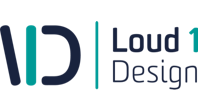The Exploration of Geometry has always been core to our work. it is something that is fundamental to the world around us a even more so when we create new objects. Tradition has it that Plato’s Academy bore above its door the inscription “let no-one ignorant of geometry enter” emphasising its importance as a basis for understanding and interrogating the world around us.
It is relatively simple to understand and quote for example Newton’s Laws of motion or Hooke’s law for elasticity, the challenge is often how to apply these to different situations and geometries. It is through exploring new forms, configurations and combinations of materials that Design and Engineering give us the power to develop new devices which delight as much as they serve a function.
Another key influence is the work of D’Arcy Thompson in ” On Growth and Form”
Quote
GH example
From this approach comes the notion of form which emerges due to a set of forces, energies and a specific environment rather than being pre-ordained and created. Indeed the debate between the theory of evolution and “intelligent design” has its analogue in the design world. With the growing complexity of current ecosystems of products and services interacting with the environment and society, is it possible that human designers are not adequately intelligent to create appropriately adapted products?
Generating a form which emerges from a set of constraints and forces rather than deciding upon a given solution and then testing it against those conditions is often termed “Form Finding”. This is most often used in the field of architecture and Structural Engineering, Loud1Design seeks to find new and unusual applications for these techniques.
Form Finding was applied successfully to generating the membrane geometry and patterning of AWS Ocean’s key technologies.
A wider topic than this is to consider design activity as something that generates a range of viable solutions allowing us to explore a solution space rather than settle on one particular solution. A number of terms to describe this approach are being tentatively used, parametric design, computational design, mass customization, design synthesis and meta design.
This last term we feel captures the approach of Loud1Design best. Meta Design is about capturing and abstracting the issues, parameters and context of a design solution in such a way as to create a class of designs which can be used to create ‘instances’ that are appropriate to their context. This is heavily influenced by the thinking of object oriented programming
– code re-use -> modularity
Wikispeed
Design Patterns
In this way a meta design can serve up mass customized design soltions. It will often make use of the algorithms and optimization techniques implied by the terms parametric and computational design.
Despite all this, the intervention of a human is always paramount, being the designer, client, user or other stakeholder.
